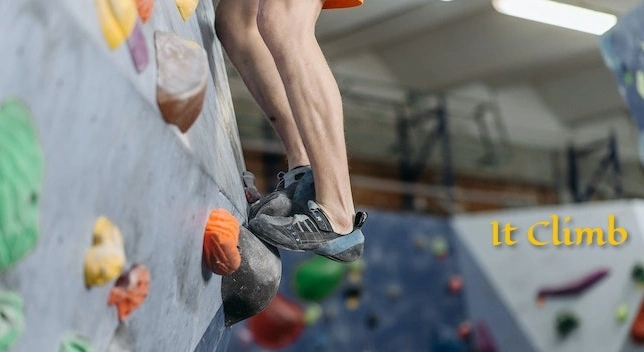Climbing shoes play a crucial role in the performance and safety of climbers. One of the most common questions among climbers is how tight should shoes be. Finding the perfect balance between comfort and performance is essential for an enjoyable and successful climbing experience. In this article, we will explore the factors to consider when determining the ideal fit for shoes. Understanding the importance of a snug fit and debunking common misconceptions will help climbers make informed decisions about their footwear. So, let’s dive in and discover how tight shoes should be for optimal climbing performance.
How Tight Should Climbing Shoes Be
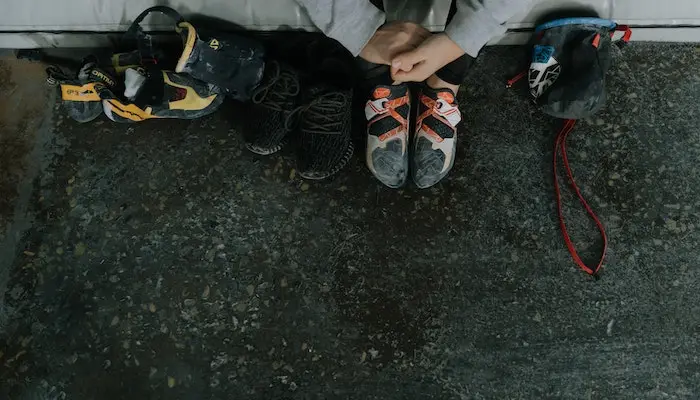
Shoes are essential gear for any climber, whether you’re a beginner or a seasoned pro. One of the most common questions climbers have is: “How tight should shoes be?” Finding the right balance between comfort and performance is crucial for an enjoyable and safe climbing experience. In this article, we will delve into the factors to consider when determining the ideal fit for shoes.
Understanding Climbing Shoe Fit
Finding the perfect fit for climbing shoe can be a bit tricky, as it varies from person to person and depends on various factors. Climbing shoe is designed to provide maximum contact and grip on the rock, allowing climbers to use their feet effectively. A snug fit is necessary to achieve this, but it shouldn’t cause unbearable pain or discomfort. Moreover, wear socks with climbing shoes for the perfect fit of your shoes.
Finding the Right Fit
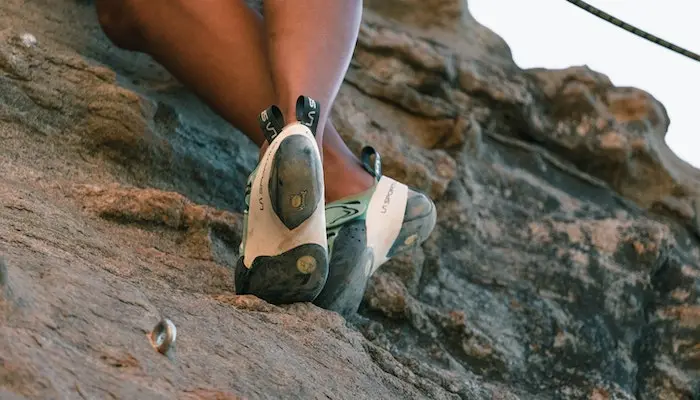
To find the right fit, consider the following aspects:
Length and Toe Fit
Climbing shoe should fit tightly around the toes, with minimal dead space. However, they shouldn’t curl or cramp the toes excessively. Aim for a shoe that allows your toes to lie flat or have a slight bend, ensuring a good balance between sensitivity and comfort.
Width and Volume
The width and volume of the shoe also play a significant role in fit. Different shoe models cater to various foot shapes, so it’s crucial to try on different options. Ensure that the shoe hugs your foot snugly without causing excessive pressure points or hotspots.
Heel Fit
A secure heel fit is essential for technical climbing. The heel should fit snugly, without any significant gaps or slippage. A well-fitting heel allows for precise footwork and stability on small footholds.
The Importance of a Snug Fit
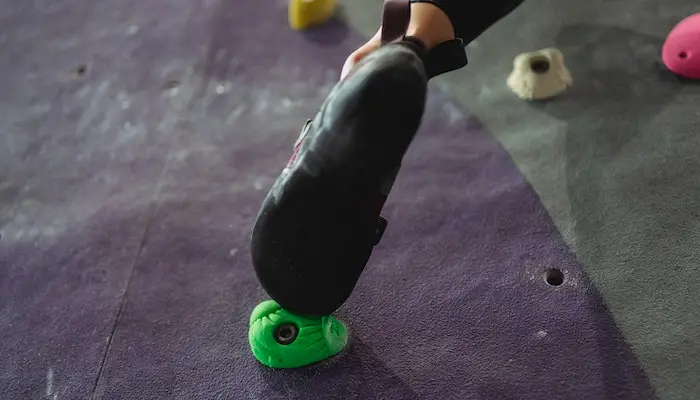
Having a snug fit in climbing shoes is vital for several reasons:
| Increased Performance | A tighter fit enhances sensitivity and control, allowing climbers to better feel the rock and make precise movements. |
| Improved Power Transfer | With a snug fit, more force can be transferred from the foot to the shoe, enhancing edging and smearing capabilities. |
| Reduced Foot Fatigue | A well-fitted shoe minimizes foot movement inside the shoe, reducing fatigue during longer climbing sessions. |
Breaking in Climbing Shoes
New climbing shoe may feel uncomfortably tight initially, but they will gradually mold to the shape of your feet with time. Breaking in your climbing shoes involves wearing them for shorter periods and gradually increasing the duration as they become more comfortable. This process allows the shoes to stretch slightly and conform to your feet, providing a better fit without sacrificing performance.
Common Misconceptions about Shoe Fit
There are a few common misconceptions when it comes to climbing shoe fit that should be addressed:
- Pain Equals Performance: While shoes should be snug, they should not cause unbearable pain. Pain is not an indicator of improved performance and can lead to discomfort and foot problems.
- Extreme Tightness is Necessary: Although a snug fit is essential, excessively tight shoes can hinder blood circulation, cause discomfort, and potentially increase the risk of injury. Finding the right balance is crucial.
Climbing Shoe Sizing for Different Styles
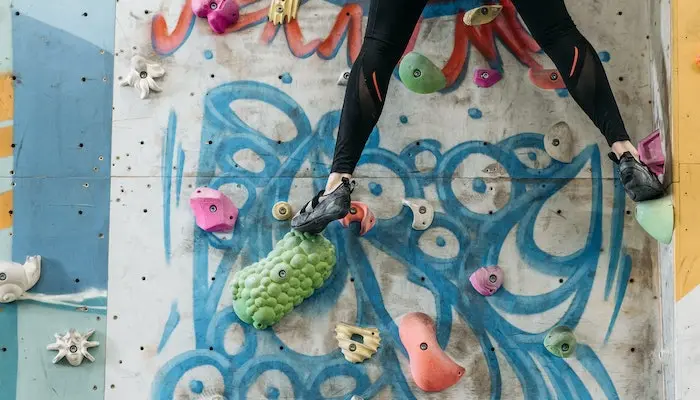
Different climbing styles may require slightly different shoe sizing considerations. Let’s explore the variations:
Bouldering Shoes
Bouldering shoes typically have a more aggressive downturn and a tighter fit to provide better precision on small footholds. Consider a size that is slightly tighter than your regular climbing shoes for bouldering-specific performance.
Sport Climbing Shoes
Sport shoes strike a balance between comfort and performance. They should provide a snug fit for precise footwork while allowing for longer periods of wear without discomfort.
Trad Climbing Shoes
Trad shoes prioritize all-day comfort and versatility. They are generally more relaxed in fit to accommodate longer climbs and multi-pitch routes. Aim for a shoe that provides a snug fit without compromising comfort during extended wear.
Tips for Maintaining Climbing Shoes

To maximize the lifespan of your shoes, consider the following tips:
| Air Dry | After each use, allow your climbing shoes to air dry in a well-ventilated area to prevent odor and the growth of bacteria. |
| Avoid Excessive Heat | Keep your shoes away from direct sunlight or heat sources, as excessive heat can cause the rubber to deteriorate. |
| Clean Regularly | Wipe down your shoes with a damp cloth to remove dirt and grime, which can affect the shoe’s performance. |
| Resole when Necessary | If the rubber on the sole wears out significantly, consider getting them resoled to extend their lifespan. |
Conclusion
The perfect fit for climbing shoes strikes a balance between comfort and performance. Remember that a snug fit is crucial for optimal climbing ability, but excessive tightness should be avoided. Take the time to try on different models and sizes, considering the specific requirements of your climbing style. With the right fit, you’ll enjoy improved performance and a more enjoyable climbing experience.
FAQs
How tight should climbing shoes be for a beginner climber?
Beginner climbers should aim for a snug fit that provides comfort without causing excessive pain. It’s important to find a balance that allows for proper footwork while not compromising on comfort.
Can I wear socks with climbing shoes?
Climbing shoes are designed to be worn without socks to maximize sensitivity and grip. Wearing socks can reduce the shoe’s effectiveness and compromise performance.
Are there specific climbing shoe brands known for wider or narrower fits?
Yes, certain climbing shoe brands are known for their wider or narrower fits. It’s recommended to try on different brands and models to find the one that suits your foot shape and width.
How often should climbing shoes be replaced?
The lifespan of climbing shoes varies depending on frequency of use, climbing style, and personal preference. On average, climbing shoes can last anywhere from six months to a few years.
Can I stretch climbing shoes to make them more comfortable?
limbing shoes can stretch slightly with use and time, but they have limitations. It’s best to find a size that fits comfortably from the beginning rather than relying on stretching to achieve the desired fit.
